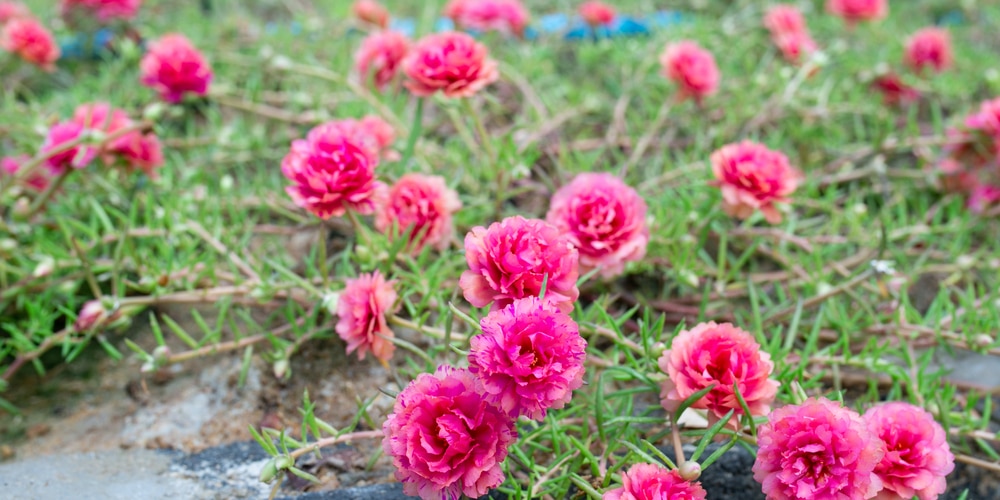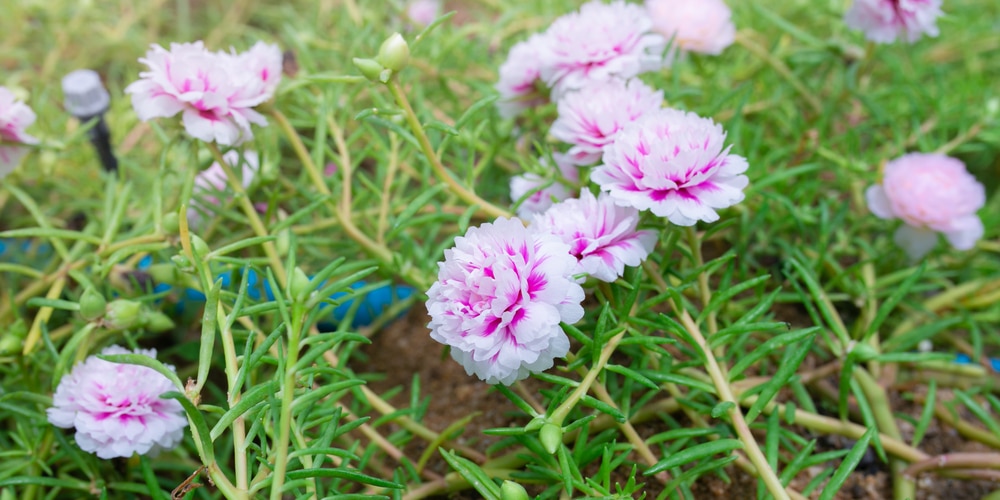The Moss rose is an annual flowering plants that adds a colorful touch to any landscape. The best part about growing them is their versatility and adaptability to various climate and soil conditions. With little care, you’ll be able to transform your garden into a colorful and pleasant place.
This plant is suitable for beginner gardeners or people without much time to spend in their yards. Indeed, it isn’t fussy about watering or feeding. But what should you know to get the best out of your moss rose?
Keep reading this essential guide we put together for you!
| Botanical Name | Portulaca grandiflora |
| Common Name | Moss Rose |
| Plant Type | Annual |
| Flower Color | The plant produces brightly-colored blooms that come in several colors with have ruffled petals and grow on reddish stems. They often look like mini roses. |
| Size When Mature | 3-9 inches tall and up to 12 inches wide. |
| Bloom Time from | From Summer to Early Fall |
| Sun Requirements | Full Sun |
| USDA Hardiness Zones | 2-11 |
| Soil PH Range | 5.0-7.0 |
| Soil Type | Well-draining and sandy |
| Water Needs | Low |
| Native Area | Argentina, Brazil, and Uruguay |
What you Need to Know About Moss Rose
Moss rose is a semi-succulent plant. Its thick leaves and stems store water and allow the plant to survive even through periods of drought. Under the ideal growing conditions, these plants spread fast and create a dense mat. You can use moss rose to create an attractive (and colorful) ground cover.
The rose-like flowers will make your garden lively and colorful. They come in white, pink, orange, red, magenta, lavender, and purple. The blooms only open in bright sunlight and will close on cloudy days. However, you can find moss rose hybrids whose flowers remain open all day.
While the plant isn’t demanding, you must be careful when adding it to your garden with pets running around. All parts of the moss rose are toxic to dogs and cats. And if you don’t want to compromise with another species, consider placing your plant somewhere inaccessible to your animal friends.
How to Care for Moss Rose
As we mentioned before, there isn’t much you should worry about when growing moss roses in your garden. Still, learning about its needs and requirements will give you better results.
Light
Place your moss rose in a location that receives at least six hours of direct sunlight. Lighting is essential for successful blooming. Failure to select a sunny spot will cause your moss rose to stop producing blooms.
Water and Soil Needs
Moss rose is a plant that has no issues flourishing in poor and dry soils. However, this plant will perform better in sandy and rocky soil. Ensure you plant your moss rose in a well-draining substrate. Avoid using clay or compact potting mixes as they might cause your plant to die.
Also, remember to avoid overwatering your moss rose. Because of its thick and succulent-like leaves, this plant has low moisture needs. Watering your plant once a week will be more than enough. Don’t forget to feel the soil with your fingers before adding extra moisture to your plant and preventing the appearance of fungal infections and root rot.
Temperature Requirements
Moss rose is native to South America. So, it prefers the heat. However, its hardiness makes it tolerate even cool weather. Still, your plant won’t survive frost. And since it is an annual plant, it will die in the winter. As an annual, moss rose thrives in USDA hardiness zones between 2 and 11. However, it will die at the first frost.
Fertilizer
Applying fertilizer isn’t necessary when growing moss rose. However, feeding your plant a suitable slow-release product might boost flower production.
Follow the instructions on the product label to prevent harming your plant. Usually, it is good practice to fertilize moss rose during the growing season (in the spring) with a fertilizer high in phosphorous.
Common Diseases
Moss roses are hardy plants. It will rarely have issues with pests or diseases. However, aphids might bother your plant. To get rid of them, spray them with insecticidal soap. Remember that taking prompt action will save you plenty of headaches in the future!
Propagation
You can propagate your moss rose through stem cuttings. Under ideal conditions, they will root fast. All you have to do is place them in water and then (when roots have developed) move them to a container with a suitable potting mix. Keep your seedlings well-watered and transfer them to the soil when ready.
Related Article: White Spots on Rose Leaves


